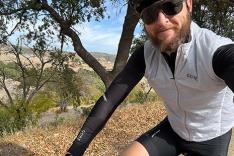
For more than a decade, Steve Hed has been telling us that wider rims are better. Recently, other wheel makers have begun to agree, releasing deep, aero wheels with wide cross sections.
Hed, Zipp, and Bontrager now offer full lines of wide wheels at various depths, and other brands are beginning to introduce their own versions. Manufacturers claim the wheels are faster than traditional designs in real-world conditions and offer better handling in crosswinds. Of course, there are limitations: Wider rims are slightly heavier and may not fit in some frames. The aerodynamic advantages are real, but minimal. Handling, however, does noticeably improve.
Designers are creating new wheels using computational fluid dynamics (CFD) software, which allows them to analyze hundreds of shapes and quickly find the most promising ones for wind-tunnel testing. Companies also now know better how to interpret and use results, building on years of test data. The combination of improved tools and knowledge has led to faster, better wheels (to learn how to maintain a good set of wheels, read The Subtle Art of Wheel Truing).
More: How to Choose the Best Wheels for You
Building for Speed
Original aero-wheel shapes were largely based on National Advisory Committee for Aeronautics airfoil (a wing seen in cross section) specifications. But those shapes were designed to work at aircraft speeds, and to generate and control lift. On a bicycle, because of the wheel/foil's orientation, lift is a side force, which can compromise control.
Another shift in aero research came when designers realized that cyclists almost never encounter a straight headwind. Crosswinds, or yaw angles, are far more common. So wheel makers have focused on maximizing performance in various crosswind conditions. The key element is stall angle.
In aerodynamics, "stall" is when an airfoil stops generating lift. In bicycles, it's when wind comes from the side, and instead of flowing smoothly around the rim, becomes turbulent. In the language of aerodynamics, the goal is to keep air "attached" to the foil; turbulent air is no longer attached. The goal is to push the stall point to a larger angle (more perpendicular to the rider), so that it keeps air attached over a wider range of wind angles before stall. Curved, toroidal, shapes, so far, have performed best in testing. Riding stronger and faster isn't all about your wheels, find out what it takes by reading Lessons from the Lab.
- 1
- of
- 3








Discuss This Article